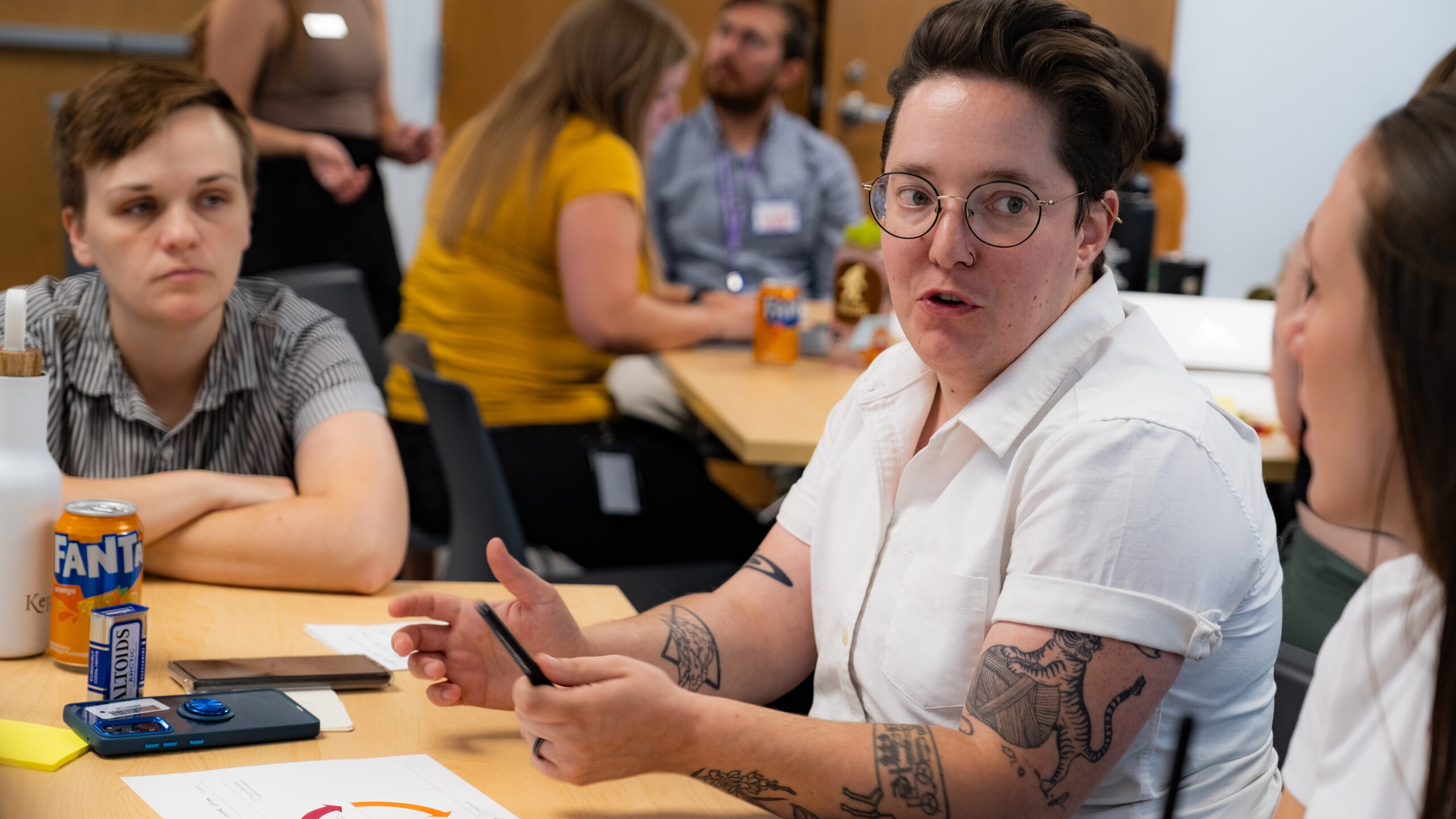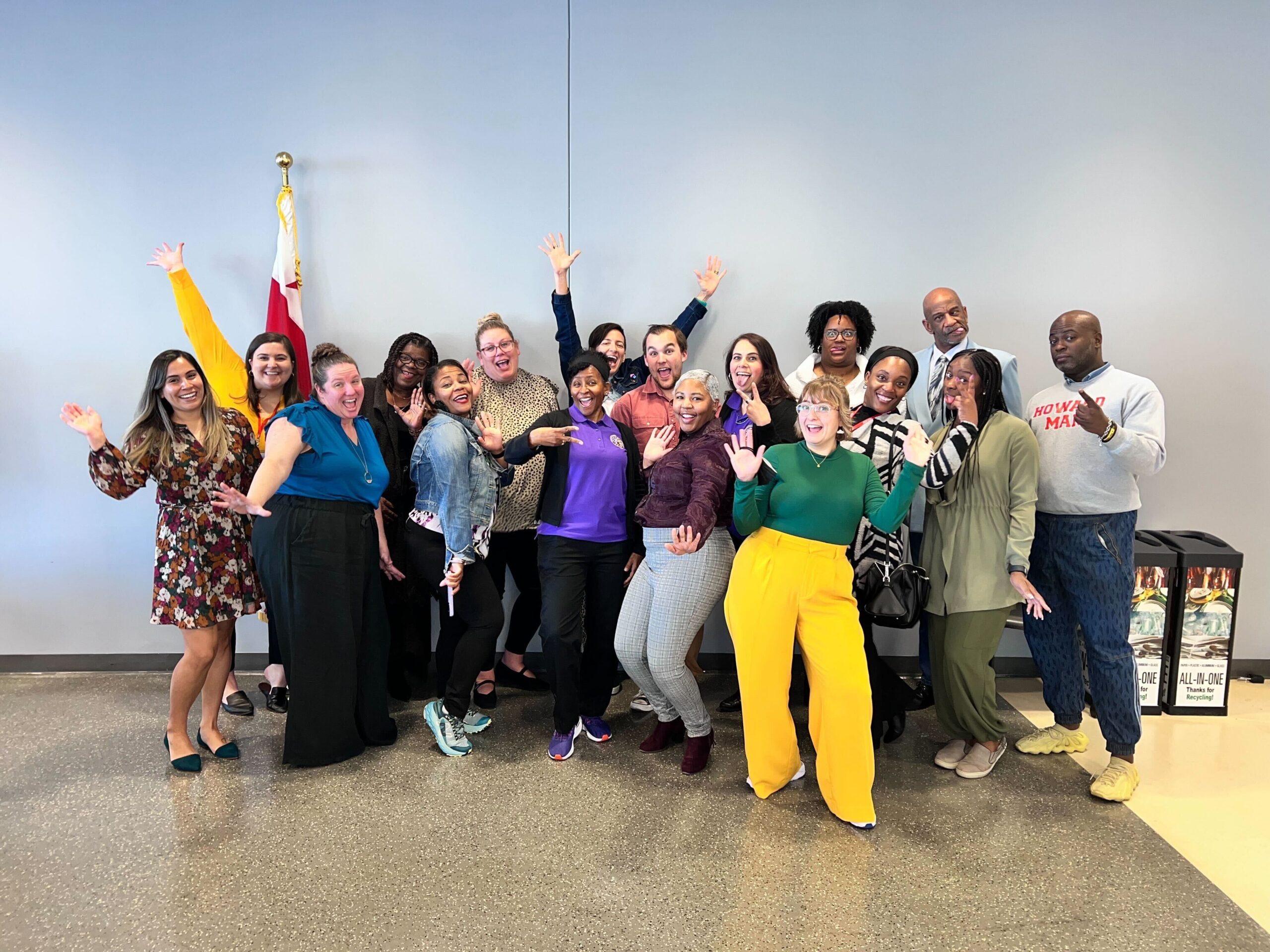Across the country, communities are making progress in reducing and eliminating homelessness. Here are some of the bright spots from the past year we saw in the Built for Zero movement to solve homelessness.
Cities large and small are making progress on homelessness, including:

Detroit has reduced veteran homelessness by 47% over the past three years.
Now they’re working toward functional zero for veterans, a milestone indicating that homelessness is rare and brief for that group.
“If the city can continue on its current trajectory, we believe Detroit will be among the first large cities in the country to achieve functional zero for solving veteran homelessness,” said Kally Canfield, a System Improvement Advisor for Community Solutions.

Minneapolis has reduced chronic homelessness by 30%.
Early this year, Hennepin County, Minnesota, announced they’d made dramatic reductions in chronic homelessness.
One key to this progress was a team of case managers dedicated to helping connect people experiencing homelessness to housing. They also prioritized outreach, to make sure they’re reaching all the people in the region experiencing chronic homelessness, so they can be connected to resources.
The team in Hennepin County is monitoring its entire homeless response system to remove hold-ups that stall or prevent people from getting into housing.
“When we take the time to come together and connect the dots, we’re able to call up issues, red flags, pull some levers, and keep an eye on things to make sure we’re always moving in the right direction,” said Danielle Werder, Area Manager of Hennepin County’s Office to End Homelessness.

Metro Denver region has reduced veteran homelessness by 21% this year.
In order to do this, the Metro Denver Homeless Initiative has found ways to coordinate across an area that includes seven counties and 3.2 million residents.
A big focus for the team has been to improve their data on veterans experiencing homelessness and make sure it’s accessible to providers throughout the region.
“The work we’ve done around veterans, and the reductions we’ve seen, are because we have formed these really meaningful local teams,” said Dr. Jamie Rife, the Executive Director at the Metro Denver Homeless Initiative. “We’re seeing some really encouraging reductions that we hope we can replicate with other populations.”
Learn more about Metro Denver’s work on veteran homelessness.

Washington, D.C., has reduced veteran homelessness by 50% since 2015.
Leaders in Washington, D.C. created a veterans work group that brings together government agencies, nonprofit organizations, and community members with lived experience. Together, this group examines the data of who is experiencing homelessness and finds permanent housing solutions for them.
“Our strategy is to have a basic understanding of every veteran, so as capacity becomes available, we can refer the veteran to services that best meet their needs and accelerate their transition to a stable, permanent housing solution,” said Jill Carmichael, Veterans Project Manager at the DC Interagency Council on Homelessness.
Read more about how D.C. is making progress on veteran homelessness.

Communities are collaborating with people with lived experience of homelessness in their efforts to end it
In Sacramento, they’re working to make their homeless response system more equitable by involving people who experienced homelessness in policy making.
“Sharing my experience with a person that never has experienced homelessness gives them a better perspective on how to create and manage those policies,” said Darrell Rogers, a member of Sacramento Steps Forward’s Partners with Lived Expertise Cohort.
Learn more about how this group is working to improve the homeless response system in Sacramento.

More communities are compiling quality data on exactly who is experiencing homelessness and what support they need to exit it.
This year, for the first time, several communities reached the milestone of creating quality by-name data for all single adults experiencing homelessness. Previously, communities had worked toward compiling this data for specific groups, like veterans or people experiencing chronic homelessness.
“Reaching quality data is a huge accomplishment,” said Tia Lurie, a Data Coaching and Performance Advisor with Built for Zero. “It’s an indicator that your community has done the work of digging deep into your local system, asking tough questions, and making significant improvements.”
Using this data, which is continuously updated, communities can track the changing size and dynamics of homelessness — and use this information to better solve it.
Washoe County, Nevada, is one of the first communities to reach quality data for all single adults. Read how this region achieved this and how they’re using this information to reduce homelessness there.

Cities are finding faster ways to create homes for people experiencing homelessness
In several tight real estate markets, Community Solutions has been working with cities to find a way to create more affordable housing, more quickly.
Using social impact investment, we’re able to buy existing property and ensure half of the units will go to veterans exiting homelessness. This process secures units for people experiencing homelessness much more quickly than typical affordable housing models, which can take years to fund and build using low-income tax credits.
This year, new properties using this model were added in Baltimore, Denver, Phoenix, and Jacksonville, Florida.
“Thanks to this social impact investment model, we will be able to help many large cities accelerate their progress, while continuing to scale a model that offers cities across the country a way to crack this critical challenge for ending homelessness,” said Dave Foster, the Manager of the Community Solutions Large Cities Housing Fund.




